Experimental Investigation of Clearance Influences on Cage Motion and Wear in Ball Bearings
Abstract
:1. Introduction
2. Experimental Approach
2.1. Description of Test Rig
2.2. Tested Bearing and Cage Design
3. Effect of Cage Guiding Clearance
3.1. Radial Motions of the Bearing Cage
3.2. Wear of the Bearing Cage
4. Effect of Cage Pocket Clearance
4.1. Radial Motions of the Bearing Cage
4.2. Wear of the Bearing Cage
5. Conclusions
- (1)
- Both the guiding clearance and pocket clearance of the bearing cage have significant effects on its motions and wear, and the guiding clearance has a more obvious effect.
- (2)
- With the increment of cage-guiding clearance, the amplitudes of the main frequency components (including the cage rotating frequency and its two times, i.e., fc and 2fc, the inner ring rotating frequency fi) will significantly change in the time domain and the trajectories of the cage will gradually change from irregular to regular. However, when increasing cage pocket clearance, the whirl trajectories change from well-defined patterns to complicated ones, which will further cause instability of the cage.
- (3)
- Additionally, the bearing cage wear is closely related to the its motion. If the inner ring rotating frequency fi dominates in cage motion, the cage-guiding surface will wear seriously due to continual impact between the cage surface and the inner ring with smaller guiding clearance. While cage motion is dominated by two times cage frequency 2fc in spectrum domain, the cage pocket will wear more seriously due to contact and rub-impact between the cage pockets and balls.
Author Contributions
Funding
Conflicts of Interest
References
- Gupta, P.K. Advanced Dynamics of Rolling Elements; Springer Science & Business Media: New York, NY, USA, 2012. [Google Scholar]
- Damiens, B.; Lubrecht, A.A.; Cann, P.M. Influence of cage clearance on bearing lubrication©. Tribol. Trans. 2004, 47, 2–6. [Google Scholar] [CrossRef]
- Ma, F.; Jiang, F.; An, Q. Simulation of hydrodynamic lubrication between cage pockets and rollers in cylindrical roller bearings. Proc. Inst. Mech. Eng. Pt. C J. Mech. Eng. Sci. 2015, 229, 2551–2560. [Google Scholar] [CrossRef]
- Yang, Z.; Yu, T.; Zhang, Y.; Sun, Z. Influence of cage clearance on the heating characteristics of high-speed ball bearings. Tribol. Int. 2017, 105, 125–134. [Google Scholar] [CrossRef]
- Gupta, P.K. Modeling of instabilities induced by cage clearances in ball bearings. Tribol. Trans. 1991, 34, 93–99. [Google Scholar] [CrossRef]
- Boesiger, E.; Donley, A.; Loewenthal, S. An analytical and experimental investigation of ball bearing retainer instabilities. J. Tribol. 1992, 114, 530–538. [Google Scholar] [CrossRef]
- Kingsbury, E.; Walker, R. Motions of an unstable retainer in an instrument ball bearing. J. Tribol. 1994, 116, 202–208. [Google Scholar] [CrossRef]
- Ghaisas, N.; Wassgren, C.R.; Sadeghi, F. Cage instabilities in cylindrical roller bearings. J. Tribol. 2004, 126, 681–689. [Google Scholar] [CrossRef]
- Liu, X.; Deng, S.; Teng, H. Dynamic stability analysis of cages in high-speed oil-lubricated angular contact ball bearings. Trans. Tianjin Univ. 2011, 17, 20–27. [Google Scholar] [CrossRef] [Green Version]
- Gupta, P.K. Modeling of instabilities induced by cage clearances in cylindrical roller bearings. Tribol. Trans. 1991, 34, 1–8. [Google Scholar] [CrossRef]
- Meeks, C.R. The dynamics of ball separators in ball bearings—Part II: Results of optimization study. ASLE Trans. 1985, 28, 288–295. [Google Scholar] [CrossRef]
- Adams, G.J.; Jones, J.R. The effect of retainer geometry on the stability of ball bearings. Tribol. Trans. 1976, 19, 95–107. [Google Scholar] [CrossRef]
- Ryu, S.; Choe, B.; Lee, J.; Lee, Y. Correlation between friction coefficient and sound characteristics for cage instability of cryogenic deep groove ball bearings. In Proceedings of the 9th IFToMM International Conference on Rotor Dynamics, Milan, Italy, 22–25 September 2014; Springer: Cham, Switzerland, 2015; pp. 1921–1931. [Google Scholar]
- Sathyan, K.; Gopinath, K.; Lee, S.H.; Hsu, H.Y. Bearing retainer designs and retainer instability failures in spacecraft moving mechanical systems. Tribol. Trans. 2012, 55, 503–511. [Google Scholar] [CrossRef]
- Gupta, P.K.; Dill, J.; Bandow, H. Dynamics of rolling element—Bearings experimental validation of the DREB and RAPIDREB computer programs. J. Tribol. 1985, 107, 132–137. [Google Scholar] [CrossRef]
- Sakaguchi, T.; Harada, K. Dynamic analysis of cage behavior in a tapered roller bearing. J. Tribol. 2006, 128, 604–611. [Google Scholar] [CrossRef]
- Wen, B.; Ren, H.; Zhang, H.; Han, Q. Experimental investigation of cage motions in an angular contact ball bearing. Proc. Inst. Mech. Eng. Pt. J J. Eng. Tribol. 2017, 231, 1041–1055. [Google Scholar] [CrossRef]
- Li, Q.; Chen, X.; Zhang, T.; Chen, S.; Gu, J. Experimental research on cage dynamic characteristics of angular contact ball bearing. Mech. Ind. 2019, 20, 204. [Google Scholar] [CrossRef]
- Chen, S.; Chen, X.; Li, Q.; Gu, J. Experimental study on cage dynamic characteristics of angular contact ball bearing in acceleration and deceleration process. Tribol. Trans. 2021, 64, 42–52. [Google Scholar] [CrossRef]
- Choe, B.; Lee, J.; Jeon, D.; Lee, Y. Experimental study on dynamic behavior of ball bearing cage in cryogenic environments. Part I: Effects of cage guidance and pocket clearances. Mech. Syst. Signal Process. 2019, 115, 545–569. [Google Scholar] [CrossRef]
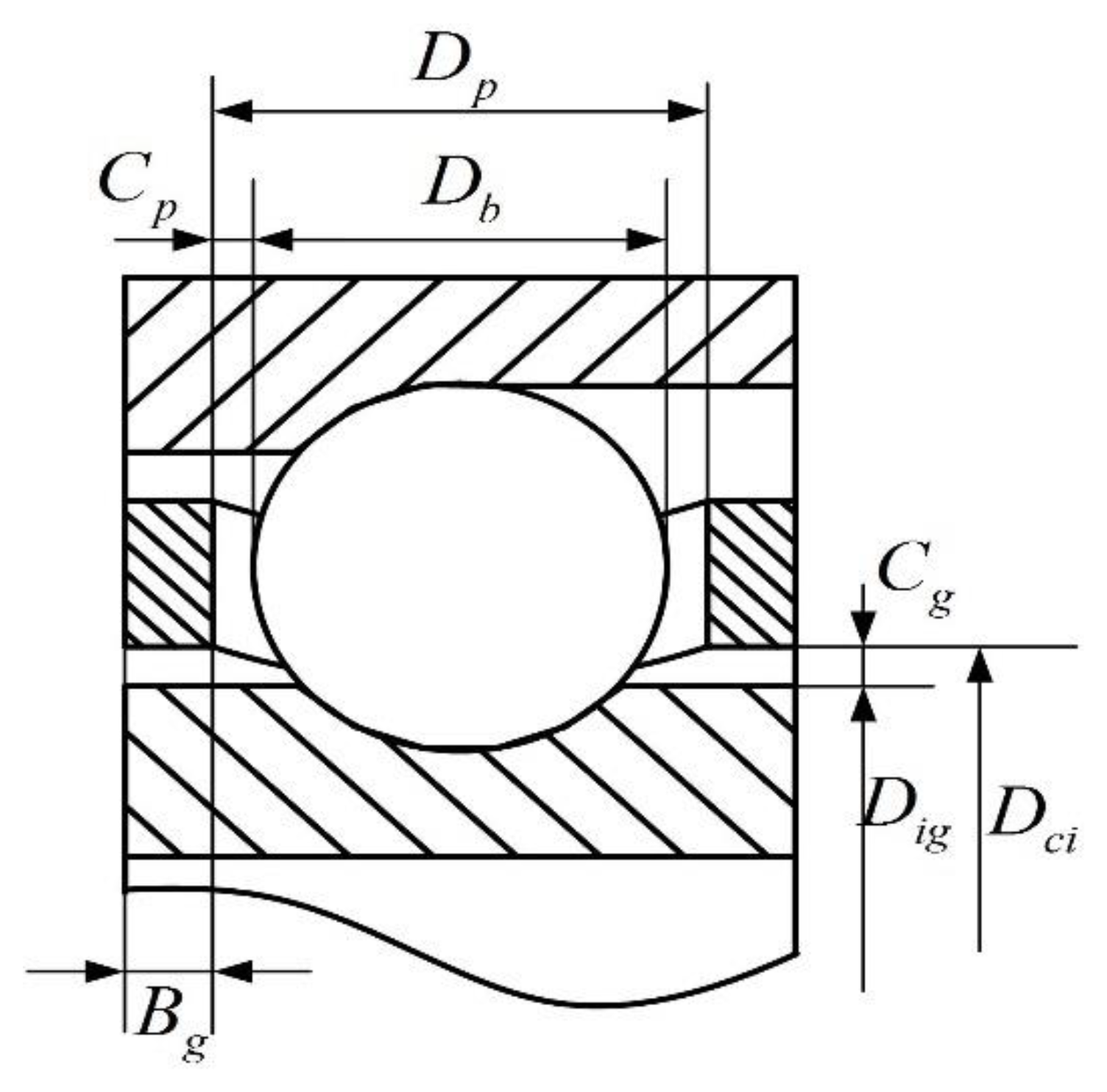
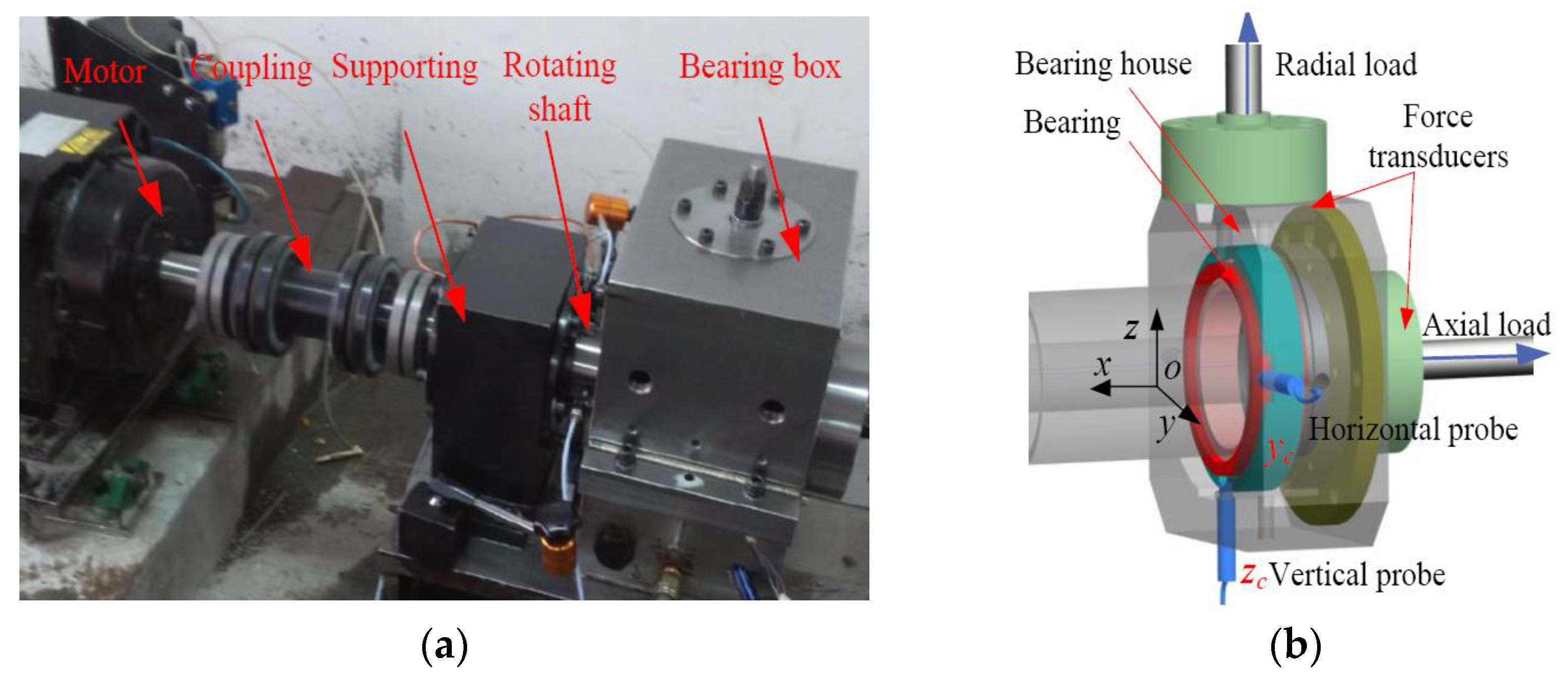
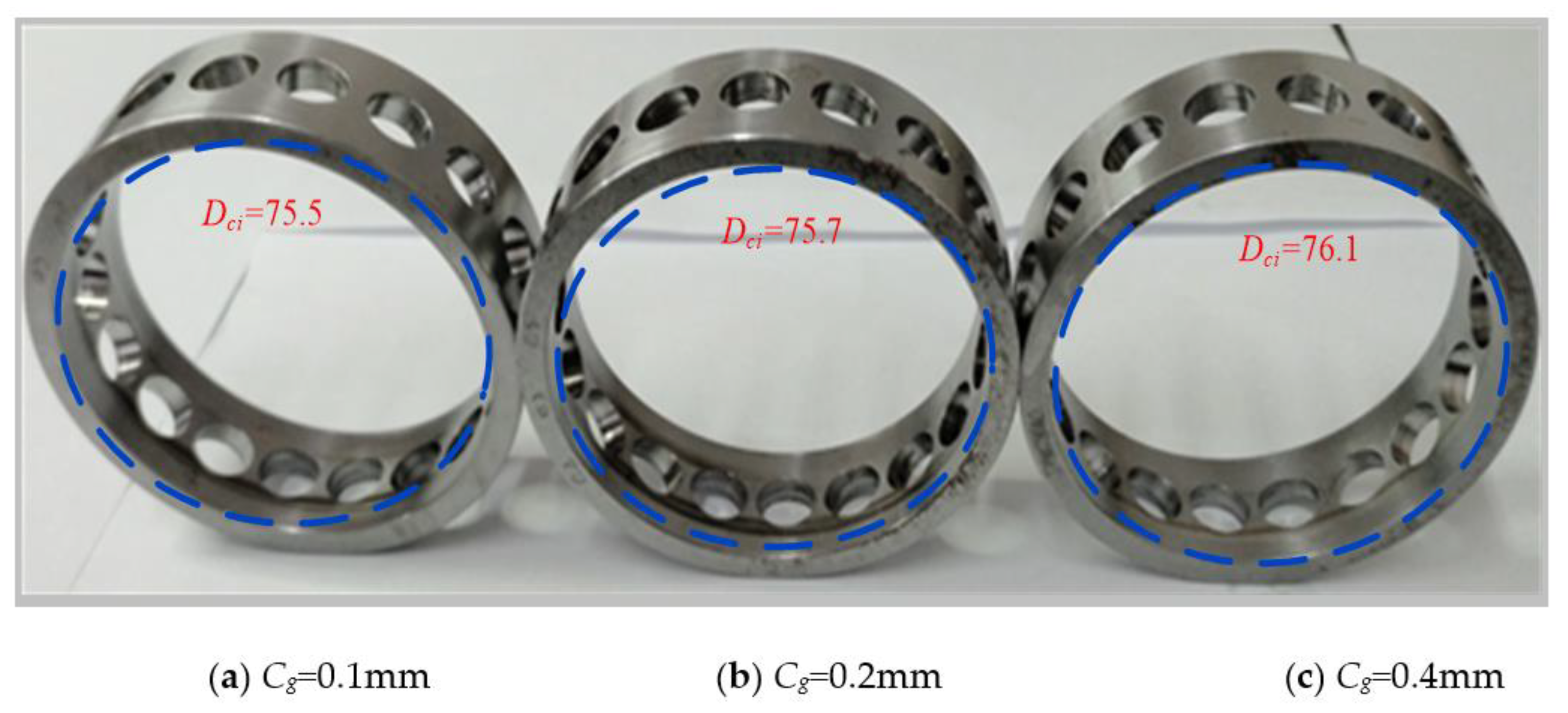
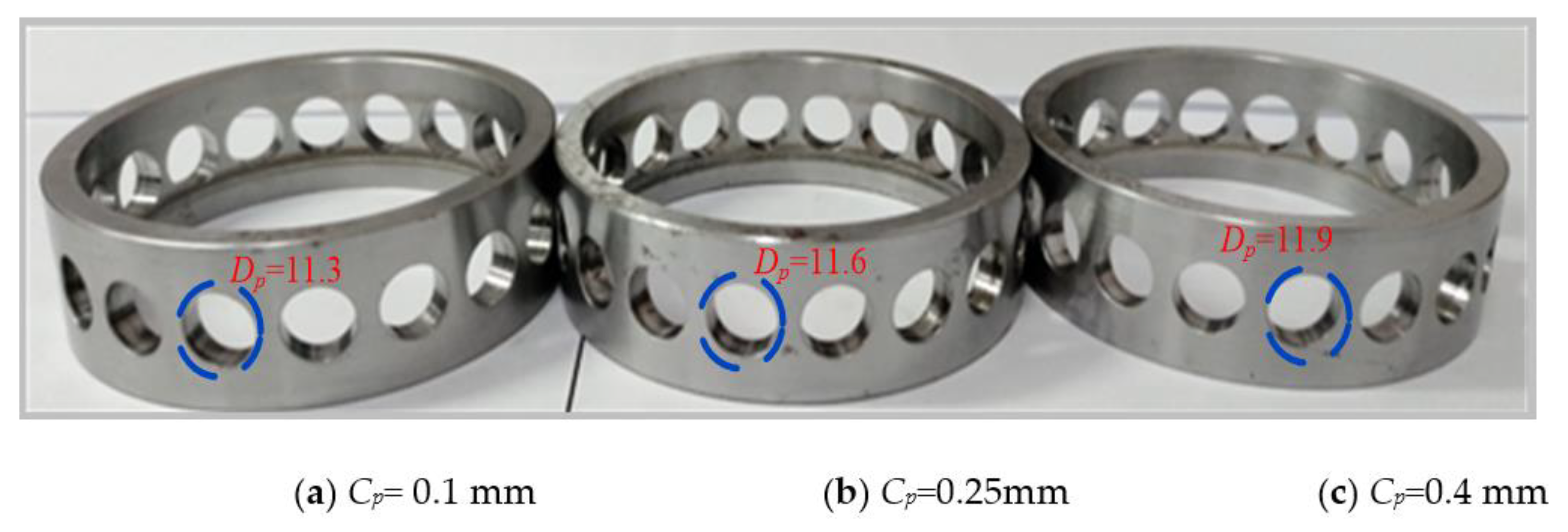
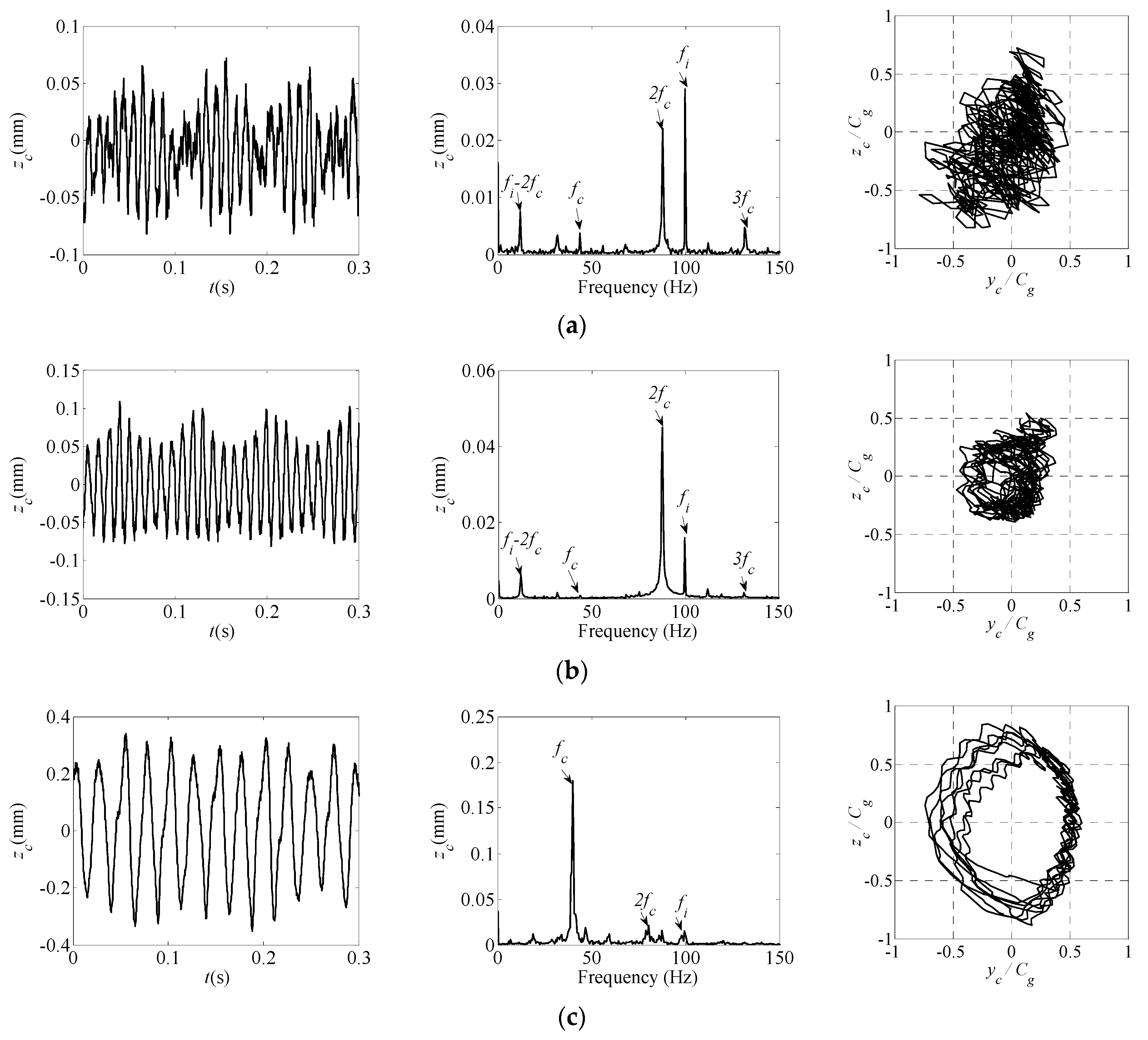
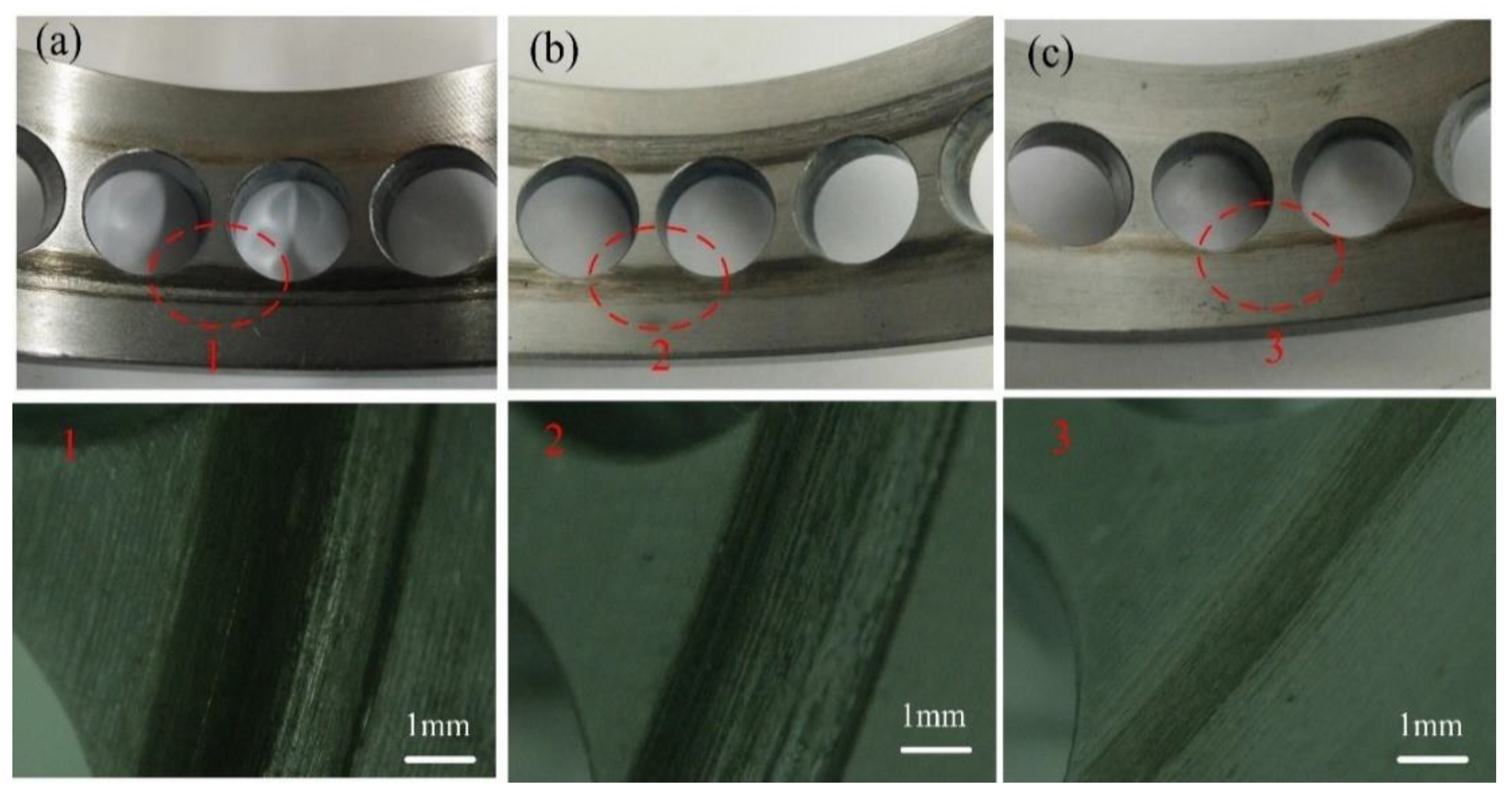
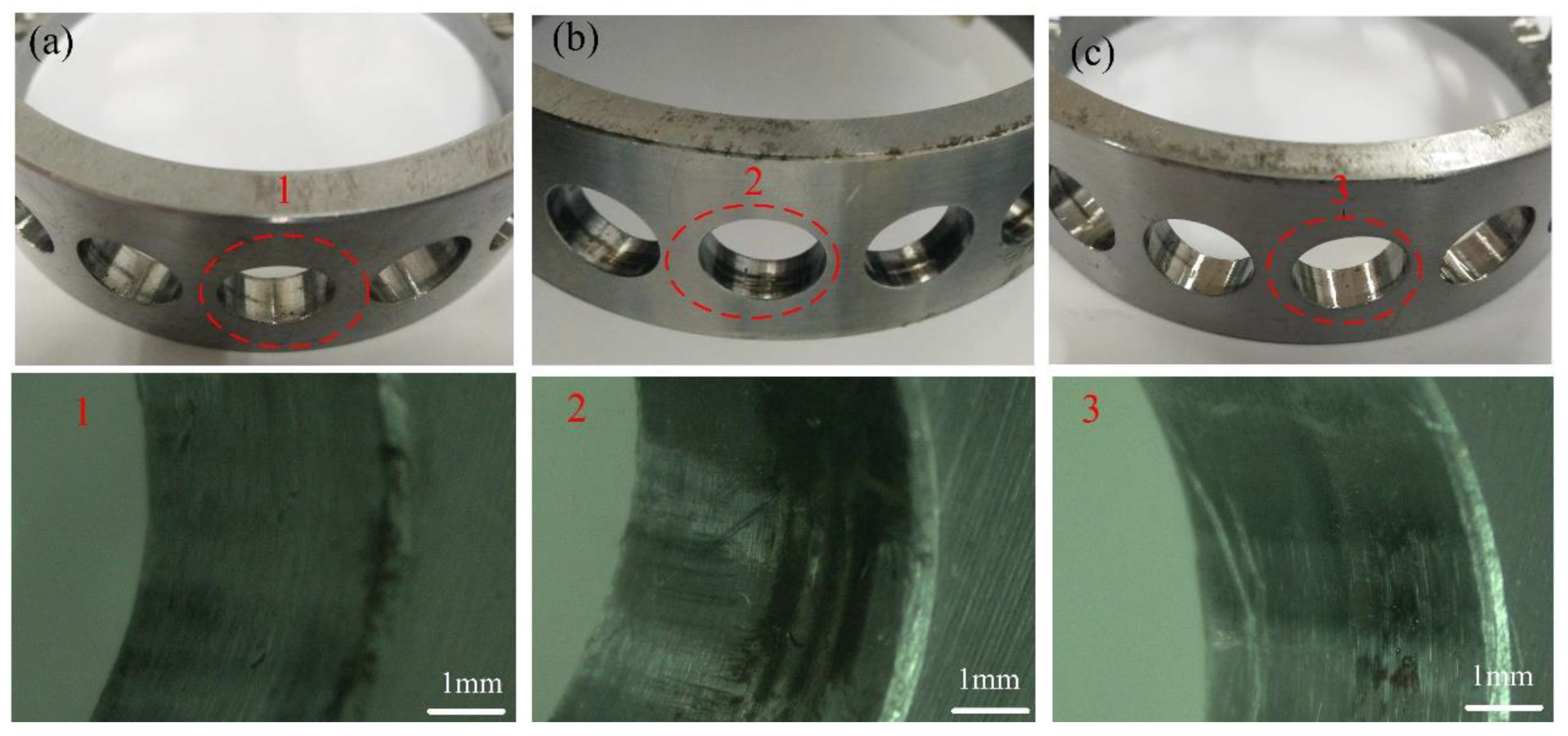



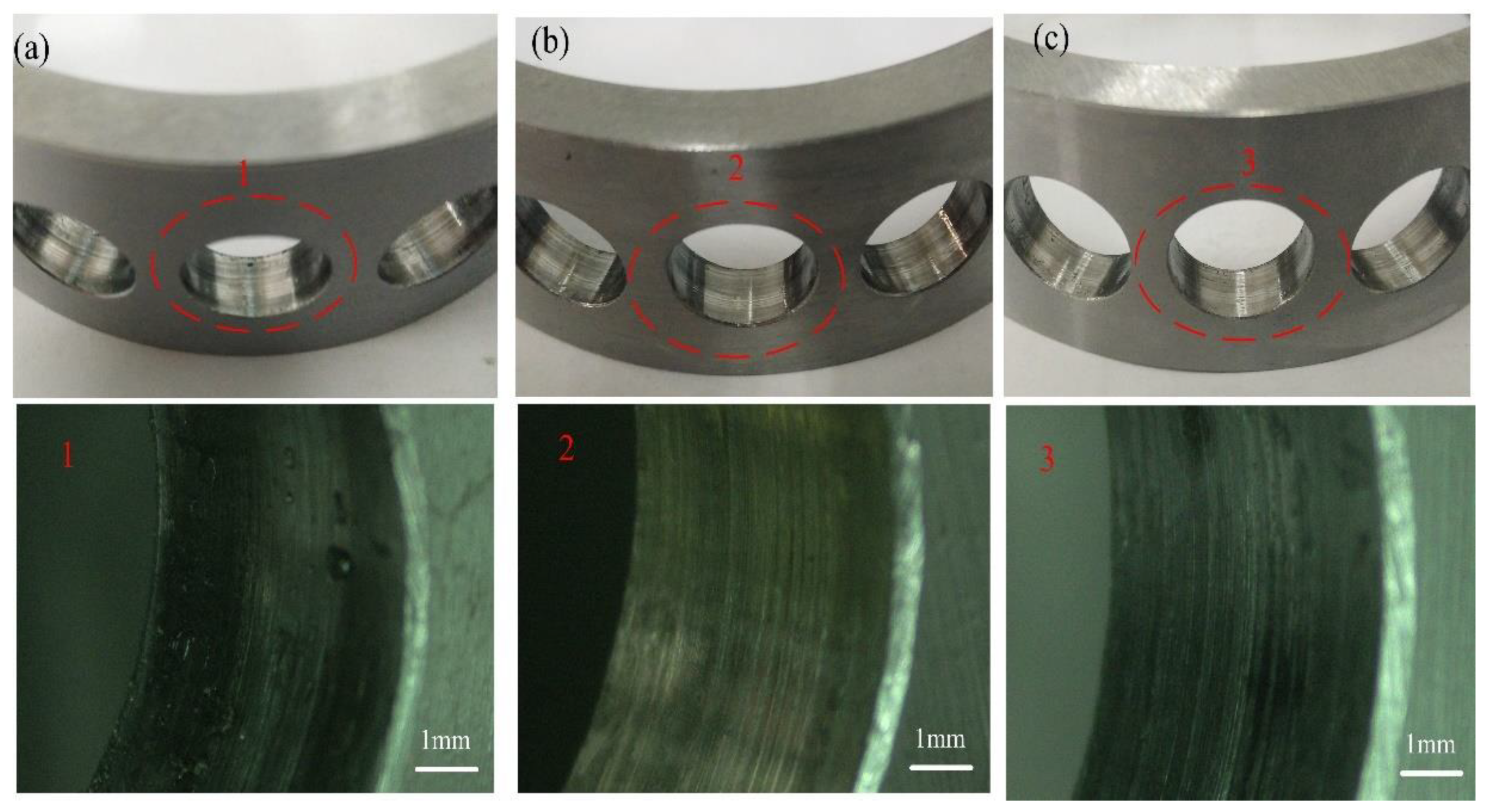
| Parameter | Value | Unit |
|---|---|---|
| Ball diameter | 11.1 | mm |
| Bearing outside diameter | 100 | mm |
| Inner ring diameter | 65 | mm |
| Initial contact angle | 25 | deg |
| Inner curvature factor | 0.515 | - |
| Outer curvature factor | 0.51 | - |
| Pitch diameter | 82.525 | mm |
| Cage outside diameter | 86.5 | mm |
| Cage width | 26 | mm |
| Number of balls | 18 | - |
Publisher’s Note: MDPI stays neutral with regard to jurisdictional claims in published maps and institutional affiliations. |
© 2021 by the authors. Licensee MDPI, Basel, Switzerland. This article is an open access article distributed under the terms and conditions of the Creative Commons Attribution (CC BY) license (https://creativecommons.org/licenses/by/4.0/).
Share and Cite
Wen, B.; Wang, M.; Zhang, X.; Zhai, J.; Sun, W. Experimental Investigation of Clearance Influences on Cage Motion and Wear in Ball Bearings. Appl. Sci. 2021, 11, 11848. https://doi.org/10.3390/app112411848
Wen B, Wang M, Zhang X, Zhai J, Sun W. Experimental Investigation of Clearance Influences on Cage Motion and Wear in Ball Bearings. Applied Sciences. 2021; 11(24):11848. https://doi.org/10.3390/app112411848
Chicago/Turabian StyleWen, Baogang, Meiling Wang, Xu Zhang, Jingyu Zhai, and Wei Sun. 2021. "Experimental Investigation of Clearance Influences on Cage Motion and Wear in Ball Bearings" Applied Sciences 11, no. 24: 11848. https://doi.org/10.3390/app112411848
APA StyleWen, B., Wang, M., Zhang, X., Zhai, J., & Sun, W. (2021). Experimental Investigation of Clearance Influences on Cage Motion and Wear in Ball Bearings. Applied Sciences, 11(24), 11848. https://doi.org/10.3390/app112411848






